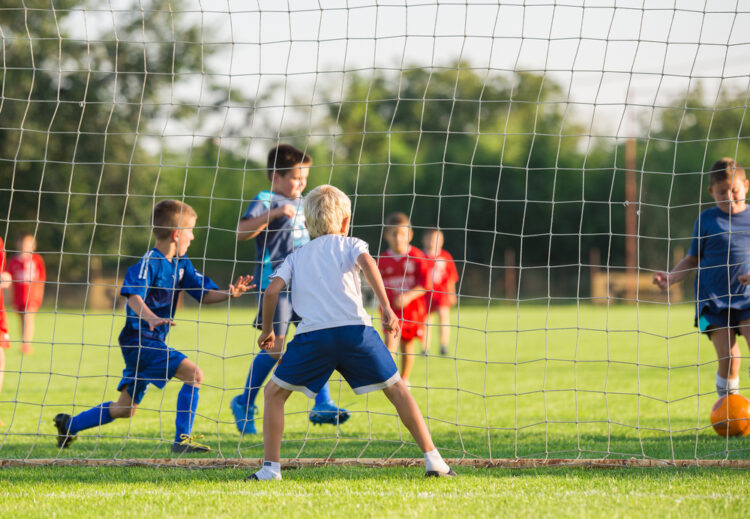There are many reasons to regularly engage in physical activity. Not only does regular exercise make our bodies healthier, but it can also improve the general outlook and provide clarity of mind. However, for some parents, nudging their children in the direction of physical activity can be an uphill battle. Since most kids are too young to fully understand or appreciate the benefits of exercise, getting them to engage in it often poses a number of challenges. Parents who are looking for effective ways to promote physical activity in their children can benefit from the following pointers.
Find Physical Activities That Interest Them

Simply trying to foist certain sports or workout regimens on your children is liable to make your home feel like an extension of gym class. As any seasoned parent can attest, children typically dislike taking part in activities that feel like obligations. That being the case, parents are encouraged to seek out physical activities that are of interest to their children. For example, if there are any sports your kids enjoying watching or playing, look for local leagues suited to their respective age brackets. Additionally, taking part in overnight basketball camps or other sports programs can be a great way to keep your children active throughout the summer months. If you are interested more about basketball camps, check out imgacademy.com
Get Their Friends Involved
If your kids prove unreceptive to your efforts at getting them involved in sports, consider reaching out to their friends and gauging their levels of interest. Most kids are more likely to take part in activities if people they know are getting involved, so if you think any of your children’s friends might be interested in certain sports, don’t hesitate to get in touch with their parents. You may ultimately wind up getting other children involved in physical activity – which is something fellow parents are sure to appreciate.
Incorporate Exercise into Daily Chores

There are many ways to incorporate exercise into your children’s regular chores, so even if sports are completely off the table, there’s no reason to throw in the towel. For example, if there are any dogs in your household, taking them for walks can help your kids build up some stamina. Additionally, if there are any nearby grocers or corner stores your family frequents, consider sending your children to do your shopping whenever you find yourself in need of food or household items. Light yard work – like raking leaves and shoveling snow –can also give your kids a solid workout.
Make Exercise Part of Family Outings
Incorporating exercise into family outings can be an effective way to stealthily foist physical activity upon your children. Frequently embarking on family walks, bike rides or camping excursions can provide your kids with hours of fun while ensuring that they get a good workout. Furthermore, when birthdays and holidays roll around, take physical activity into account when choosing gifts. A brand new bike, for example, can provide a child with an incentive to ride around the neighborhood and get valuable exercise. Similarly, installing a basketball hoop or tennis net in your yard is a great way to encourage outdoor play.
When working to encourage active play in younger children, trips to local parks and playgrounds should be part of your regular routine – particularly if you don’t have space or financial resources to install playground equipment at home. Such outings can be particularly beneficial if the parks you visit are within walking distance of your home, as this ensures that your kids will get a double workout: the trek to the park and the active play they’ll engage in once there.
Limit Screen Time

In the digital age, the average child has at least three different screens vying for their attention at all times. While some children are able to effectively self-regulate and balance screen time with physical activity, many kids find it difficult to enjoy screen time in moderation. If the latter describes your children, make a point of limiting daily screen time. Since your kids will be left with few alternatives, this is likely to steer them in the direction of outdoor play and consistent exercise. To help them along even further, parents with space to spare should consider installing swing sets and/or other playground equipment in their backyards.
Make Screen Time Contingent on Active Play
If limiting screen time fails to have the desired effect, consider making screen time contingent upon physical activity. In essence, this means not allowing your kids to enjoy their favorite devices until an active play quota has been met. Requiring your children to engage in active play for 30 minutes to one hour a day can effectively improve mood, increase stamina and set the stage for healthier habits. Keep in mind, however, that this shouldn’t entail making your kids exercise to the point of exhaustion.
Set a Good Example

Even if they regard their folks as uncool or out of touch, most children imitate behaviors they observe in their parents. With this in mind, it behooves parents to set a good example – particularly when it comes to regular exercise. This isn’t to say that you’ll need to sweat it out at the gym every day, but you should engage in some level of consistent physical activity. For example, if you start going for daily walks, your children are liable to take notice and become intrigued. Alternatively, if you begin doing daily stretches or strength exercises, your kids may express interest in joining them. Not only will setting a good example to get your children thinking about exercise, but it can also help improve your physical health and overall mood.
It isn’t hard to see why physical activity in children is at an all-time low. Between smartphones, computers, video games, and TV, kids have a shortage of things to occupy their free time. While there’s nothing wrong with indulging in modern technology, doing so to the point of neglecting basic exercise presents a number of problems. Since regular physical activity can be hugely beneficial to a child’s physical health and mental wellbeing, it’s in every parent’s best interest to encourage activeness in their kids.
 Hi Boox Popular Magazine 2024
Hi Boox Popular Magazine 2024



